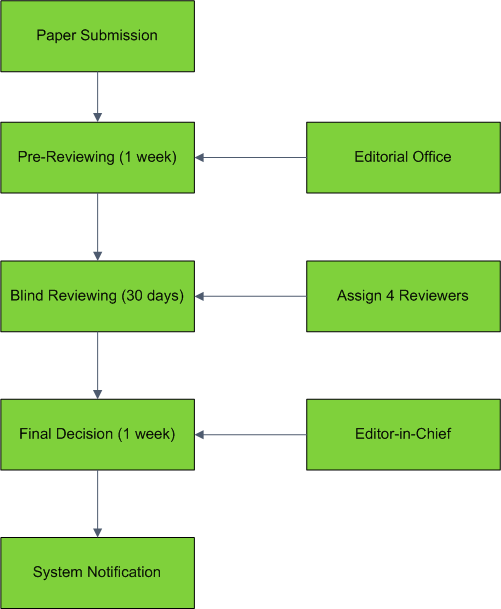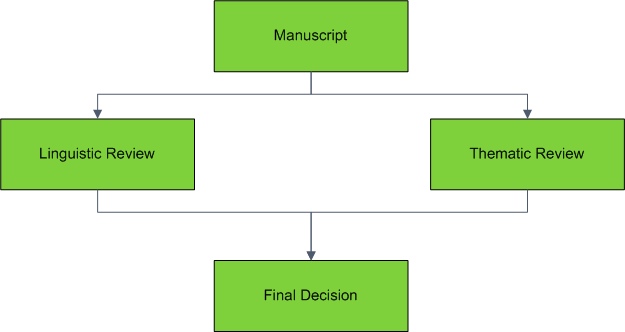Referees play a crucial role in evaluating manuscripts submitted to the NSP. NSP editors work closely with referees to apply the acceptance criteria stringently and to act promptly in accepting or rejecting manuscripts. Referee’s active collaboration is central to the success of the journals. Invitation to Review The email invitation to review includes links to accept or decline. Before you accept, please ensure that the manuscript content is close enough to your area of expertise to allow you to provide useful input and a prompt review. If that is not the case, please decline; your suggestions for alternate reviewers are welcomed. Confidentiality All materials associated with the review process are confidential, including the manuscript, Supplemental Material, author-provided material, referee reports, and other correspondence. These materials must remain confidential when you consult with colleagues or invite them to write a joint report. We ask that you include the names and contact information of any colleagues who help in writing the report. When you are reviewing a manuscript, please do not initiate discussions with the author(s); instead, please contact the editors with your inquiry. It is vitally important for reviewers to disclose any conflicts of interest to the editors. Please let them know if you have a direct competitive, collaborative, or other relationship with an author that could preclude your objective evaluation of the manuscript. It is unethical for you to use the content of a manuscript sent to you for review for your own scientific purposes. Reviewing the Manuscript and Writing the Report The following guidelines are an aid to help when reviewing the manuscript. Read the referral letter carefully; there may be editor comments and questions, and/or reference material and previous correspondence sent with the referral. When writing your report, use clear, simple wording and avoid overly negative or polemical comments. We suggest dividing your review into three parts: Comments intended for both the author(s) and the editors; Recommendation; and Comments to the editors only. Comments intended for both the author(s) and the editors: Briefly summarize the manuscript. The summary could include a statement on the key results and how they add to the field. Assess the originality and significance of the results. Assess the technical quality and scientific rigor of the manuscript. 1. Is the work well executed and technically correct? 2. Are the models or approximations used sufficiently justified? 3. Are the main conclusions or claims well supported? 4. Is the section for which this manuscript is being considered (Regular Article, Letter, or Comment) the right venue for this work? Be aware that some sections have length limits. 5. If submitted as a Letter, does the work’s quality and importance justify being featured in this special section? Assess the manuscript’s presentation. 1. Are the title and abstract informative, concise, and clear? 2. Is the manuscript well organized and clearly written? 3. Is the description of the technical content sufficiently comprehensive? 4. Are the references to the literature appropriate and adequate? 5. Does the content of the manuscript justify its length? Please be specific as to how and where the manuscript could be expanded or shortened. 6. Are the figures and tables clear, useful, and suitably summarized in the captions? Is there duplication from previous publications? Assess the content and quality of the Supplemental Material. Is the information included supplemental or essential for understanding the manuscript? Should any of it be included in the main text? When writing your report, please formulate it in gender-neutral terms. If unavoidable, please use the singular “they/them/theirs” in place of gender-specific pronouns. Recommendation: Your report should include a recommendation to accept, revise and reconsider, or reject the manuscript. Please provide reasons for your recommendation. Comments intended for the editors only: When submitting your report, you will be presented with a table of checkboxes where you can summarize your overall view of the manuscript for the editors. Here you can indicate your recommendation on accepting or rejecting the manuscript, and, if appropriate, suggest that the paper be transferred to another NSP journal or submitted elsewhere. This section is where you may include confidential remarks for the editor. These comments may include your thoughts on why the paper is right or wrong for the particular journal, reasons behind your recommendation, or other information you feel would be useful. The reviewing procedure for Comments is usually as follows: The paper is sent to the authors whose work is being criticized. These authors should provide a report, following the normal guidelines for referees. This report will be sent to the authors of the Comment for possible revision with the understanding that the Comment will be reviewed further. At this stage, the authors of the original paper should send only a report suitable for transmission to the authors of the Comment; they will be given the opportunity to write a Reply at a later date. After suitable exchanges between the involved parties, the Comment, along with relevant correspondence, is sent to an “uninvolved” referee for anonymous review. If the recommendation is to accept the Comment, the authors whose work is being commented on are given the opportunity to write a Reply. This Reply will also be reviewed; usually by the “uninvolved” referee(s). After the Comment and Reply are accepted for publication, the authors of the Comment are sent a copy of the Reply for their information, but should not alter the Comment unless requested to do so by the Editor. The Comment and Reply are usually published in the same issue. If, however, the Reply is unduly delayed, it may be published in a later issue; if a Reply is deemed unnecessary, none will be published. Review Steps All manuscript will be assigned to more than one reviewer through 5 steps. As soon as we receive an article, the Editorial office will Pre-Review your manuscript in one week. The officer will check whether the manuscript is valid and language is fluent and necessary factors are all included. The officer will also cross check the article in crossref database in order to avoid plagirsm. The following is a formal review process accomplished by other official reviewers for one month. It is decided by Editor-in-Chief in one week whether your manuscript is accepted or not. All submitted papers will be reviewed in about six weeks. 
Type of Peer Review This journal follows blind reviewing process, where both the referee and author remain anonymous throughout the process. Formal Conditions of Acceptance Each article submitted to us will be reviewed by at least 2 reviewers. Moreover the papers will be checked for linguistic consistency. Thematic review will decide whether to accept or reject according to the originality, significance for theory and practice, quality of content and presentation of submitted paper.  |